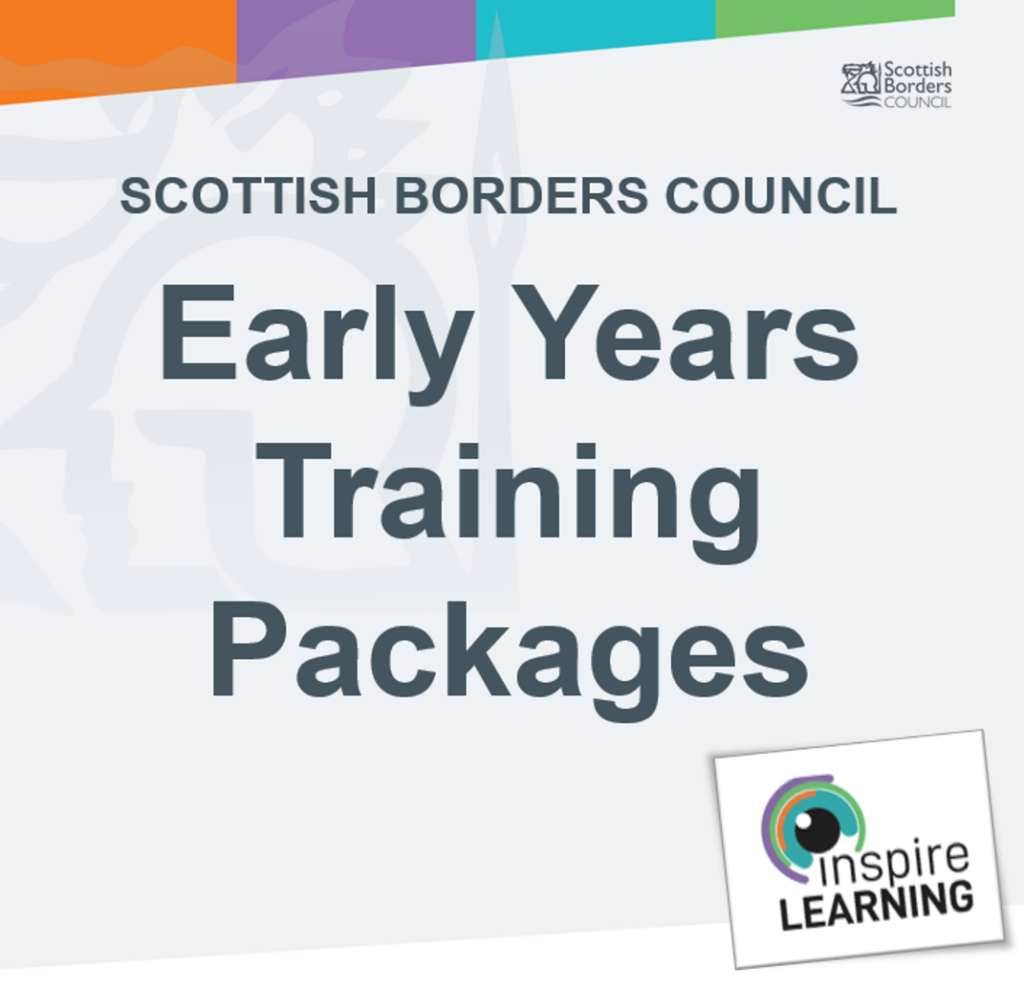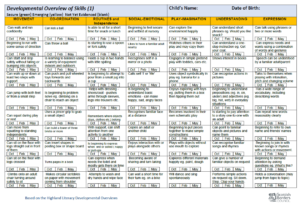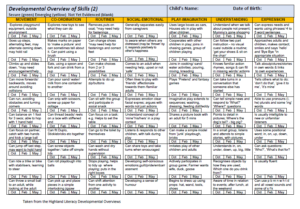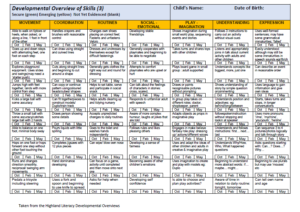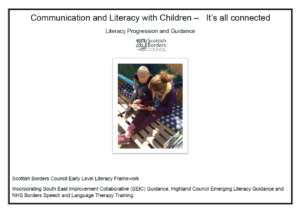Emerging Literacy & English
(Pre-hand) Writing
What is it?
(Pre-hand) writing skills range from gross to fine motor movements, including scissor skills. These enable children to develop the movement and coordination to mark-make with increasing control and accuracy, leading to the correct formation of letters.
“We all have a sensory system called the vestibular system which gives us
our sense of balance and spatial awareness. It helps us coordinate our large
and fine motor movements and maintain our posture. The development of
movement and coordination for a child is linked to communication and
cognitive development. For instance, a young child with an developing
vestibular system will find it almost impossible to sit still for any length of time
or possess the fine motor skills and coordination required for writing before
they are ready. This is why observations of a children’s actions are crucial to
inform our practice and ensure it is developmentally appropriate.
The best way to help babies and young children develop this system is
through providing daily opportunities for physical play, especially outdoors.”
(Realising the Ambition, Education Scotland, 2020, p. 24)
Key messages:
- Practitioners must complete SBC Early Years Emerging Literacy training packages 1-4, and then use these sessions to support whole setting professional dialogue to evaluate current provision, develop practice and improve outcomes for all children.
- Practitioners use the SBC Developmental Overviews and SBC trackers to recognise and plan for the developmental stage of children’s pre-writing skills (see tabs at the bottom of this page).
- Knowledgeable practitioners share, value, understand and support the developmental progression and gross and fine motor control stages. This is inclusive of:
-
- Observing
- Interacting
- Planning
- Provision of opportunities
- The continuous provision provides daily, developmentally appropriate opportunities for pre-writing and mark-making skills across all spaces, indoors and out.
- Practitioners plan, provide and interact with daily developmentally appropriate and progressive opportunities for fine and gross motor control skills development, indoors and ‘writing for a purpose’.
- P1 teachers use the screening tools to assess children’s development before introducing formal handwriting instruction (Emerging Literacy – Pencil Control Skills, Highland Literacy).
- P1 teachers use the guidance on the Highland Literacy website for formal letter formation and handwriting (Emerging Literacy – Pencil Control Skills, Highland Literacy).
Ways we can do this:
Knowledgeable practitioners share, understand, value and support the developmental progression of stages of writing. This is inclusive of:
Observing: Practitioners use their observations and knowledge of children’s interests and motivations to enhance their provision using stimuli to inspire children to mark-make, e.g. making signs for a den, map-making.
Interacting: Practitioners value, notice and respond to all children’s mark-making and emerging writing. Practitioners show interest in pieces the children share and use as an opportunity for discussion, modelling, explaining and teaching points.
Practitioners verbalise their thinking whilst modelling writing (making the purpose explicit) and support children to do the same.
Planning: Practitioners engage in professional learning, developing a detailed knowledge and understanding of:
- Different stages of physical motor development, e.g. pivot control, gross and fine motor skills and pencil grip
- Sensory integration
- Pencil control skills
These experiences are visible within the planning and spaces that provide rich ‘levelled’ (differentiated) opportunities to support each individual.
SBC Developmental Overviews and Literacy Trackers are kept current. These are used to identify any ‘shared gaps in learning’, which are targeted through the intentional promotion and possible individual lines of development that use the children’s interests and dispositions.
Provision of opportunities: “It is the brain that learns – the brain that learns to write, not the hand. This means that a child can be working on their Pre-Writing skills without a pencil in their hand.”
(Pre-writing skills, SBC EYTT Emerging Literacy Pre-Writing Training Package, Highland Literacy, 2016)
Provision of developmentally appropriate opportunities for motor control skills progression: Plentiful, well-resourced spaces with various large and small vertical and horizontal surfaces to work on both indoors and outdoors. Resourcing should be found within a mark-making area and throughout the setting, e.g. notepads, menus, diaries, cards, range of papers, envelopes and post-it notes.
An accessible variety of high-quality, natural mark-making tools, e.g. twigs, stones, feathers, alongside various sizes and thicknesses of writing implements, e.g. pencils, pens, crayons, and chalks, develop children’s pincer grip and pressure control.
Daily opportunities for children to use a range of developmentally appropriate scissors to develop cutting skills and joining materials to meet the motor control needs of all, e.g. glue sticks, spreaders, PVA glue, tape, stapler, string, pegs, split-pins and hole-punches.
Daily opportunities for developing hand strength using malleable materials of differing consistencies, e.g. foam, playdough, clay, plasticine (Getting Ready to Write, Alistair Bryce-Clegg, 2013 and ABC Does blog).
Developmentally appropriate opportunities for ‘writing for purpose’: Daily opportunities to model writing for a purpose, e.g. writing observations with the child, registration, risk assessments and notes home.
Daily opportunities for children to engage in ’emergent writing’ through play for different purposes, e.g. cards, menus, customer orders, recipes, instructions, labelling of pictures and other creations.
Practitioners use setting routines to provide and explore purposeful environmental print, e.g. snack or lunch menus, children’s risk assessments and self-registration (Making Learning Visible, Concepts of Print).
Additional handwriting support documents: (Teaching Handwriting – the Foundations and Building Blocks, Highland Literacy, 2018)
Learn more about Oral Language & Phonological Awareness/Listening & Talking
Learn more about Emerging Literacy & English
Learn more about Concepts of Print/Pre-Reading & Emergent Writing
Linked Areas of Practice
Concepts of Print/Pre-Reading & Emergent Writing
Emerging Literacy & English
Oral Language & Phonological Awareness/Listening & Talking
Tools
Reflecting on Practice
SBC Guidance to support
National Guidance to support
Further Reading to support
Training to support
SBC Early Years training video Pre-Writing:
Follow link for acronyms used in presentations
No supporting materials
To see all the SBC Early Years training videos visit:
- Guidance for use of Developmental Overviews
- SBC Developmental Overview 1
- SBC Developmental Overview 2
- SBC Developmental Overview 3
- SBC Literacy Progression & Guidance 2022
- SBC Literacy Tracker
- Photos & mark-up to support mark-making
- Sketches school app to support mark-making
- Writing Ready Warm-up cards
